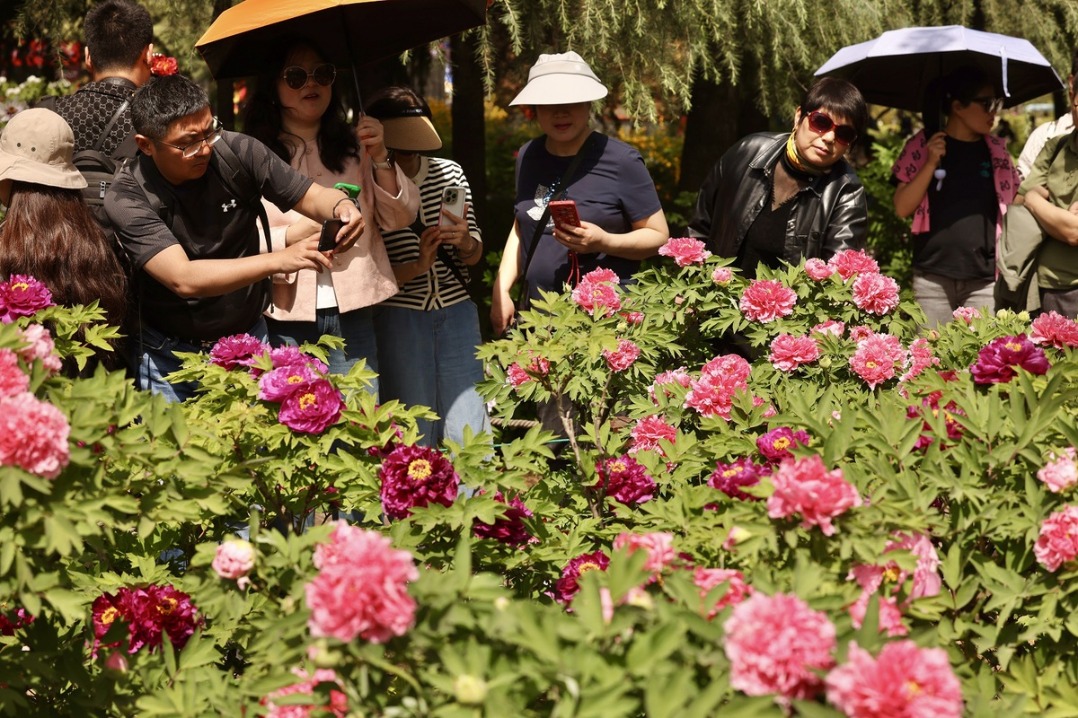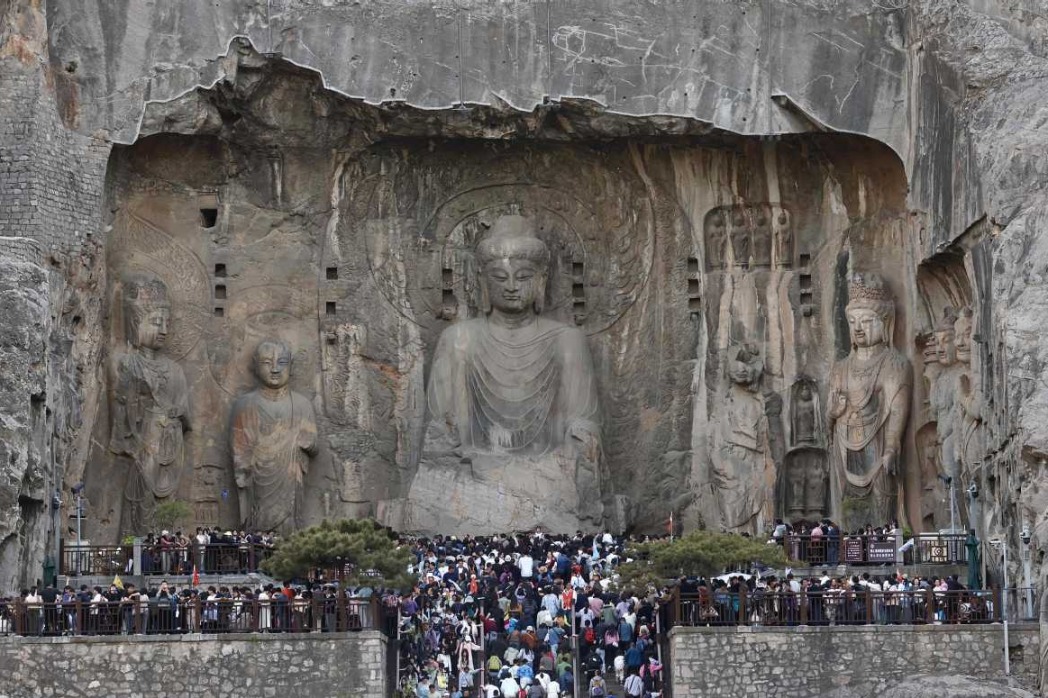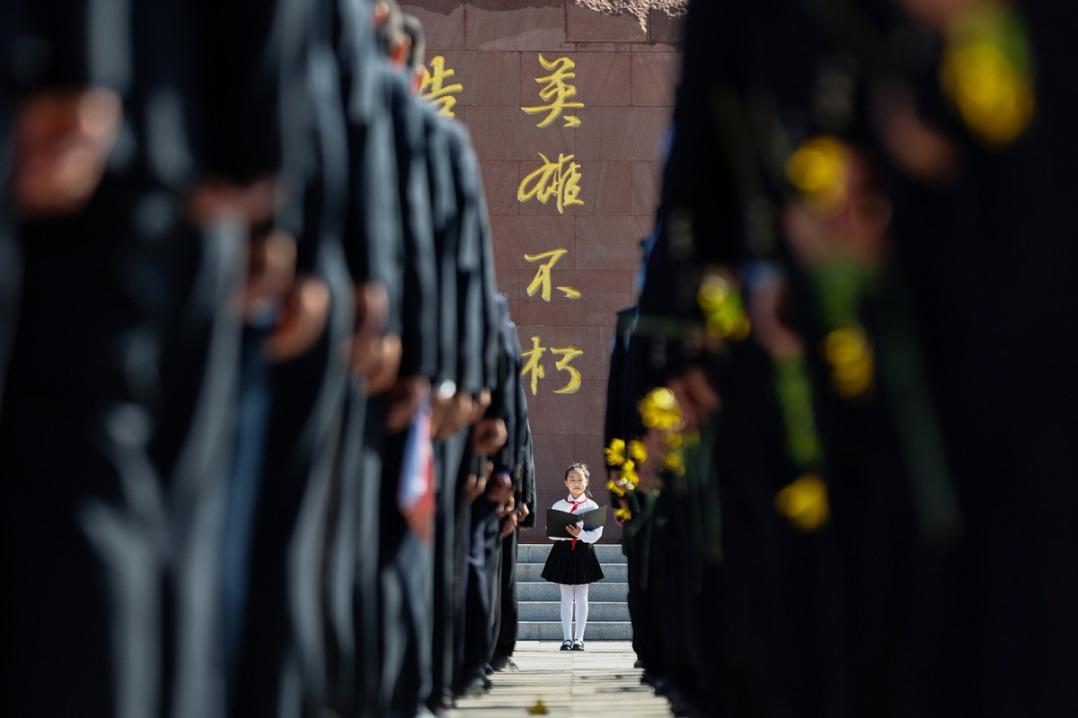Solar power projects drive ecological restoration in North China's deserts

HOHHOT -- Deep in the Kubuqi desert in North China's Inner Mongolia autonomous region, rows of blue solar panels glisten under the winter sun, converting sunlight into electricity that flows into thousands of households.
Beneath the panels, different types of shrubs stand tall despite their dormant yellowed leaves, shielding the land from wind and sand.
"By the end of 2023, this one-gigawatt solar power project was successfully connected to the grid, transforming over 30,000 mu (about 2,000 hectares) of desert into a sea of solar blue, with thriving vegetation flourishing beneath the panels," said Na Guiting, who is responsible for the project.
The project Na is working on is the first phase of the Kubuqi Desert Northern Ordos New Energy Base.
As one of China's first large-scale renewable energy bases with a capacity exceeding 10 gigawatts, the base is set to develop eight gigawatts of solar power, four gigawatts of wind power, and four gigawatts of supporting coal power.
The electricity generated will be transmitted to the Beijing-Tianjin-Hebei region through an integrated system combining solar, wind, coal, and energy storage, with 230,000 mu dedicated to photovoltaic sand control.
Once the project is completed, it will deliver approximately 40 billion kilowatt-hours of electricity annually to the Beijing-Tianjin-Hebei region, with over 50 percent coming from clean energy sources, according to Na.
It is equivalent to saving about 6 million tonnes of standard coal and reducing carbon dioxide emissions by around 16 million tonnes each year, Na added.
The Kubuqi project exemplifies China's broader effort to integrate renewable energy with ecological restoration. In the arid expanses of northern China, advanced technology is reshaping the battle against desertification, turning it into a narrative of resilience and renewal.
In Northwest China's Gansu province, solar energy projects are being combined with afforestation programs at the southeastern edge of the Tengger Desert, creating a synergy that not only restores ecosystems but also boosts local economic development.
Local villagers are also finding employment in these initiatives, blending green technology with grassroots participation.
"I never would have imagined that as a farmer, I could find work in the sand dunes," said Qin Zhaoping, a resident of Hengliang township in Gansu's Gulang county. His job involves adjusting the sprinkler irrigation systems beneath photovoltaic panels and tending to the thriving sand plants.
For Qin, photovoltaic-based desert control is a meaningful effort that benefits future generations. "It generates electricity, combats desertification, and provides me with an income from working here," he said.
According to official data, 53 percent of China's treatable desertified land has been restored, leading to a net reduction of approximately 4.33 million hectares of degraded land.
In Inner Mongolia's Ordos, the city is not only developing solar power bases in traditional desert and arid regions but also advancing the construction of solar facilities in non-arable coal mining subsidence zones.
In November 2024, a three-gigawatt solar power station in Otog Front Banner of Ordos, built by CHN Energy Investment Group, was connected to the grid. It is currently the largest single-capacity solar power base built on a coal mining subsidence zone in China.
The power station is expected to generate 5.7 billion kilowatt-hours of electricity annually, sufficient to meet the yearly energy needs of two million families.
"Solar power stations are relatively lightweight, making it possible to repurpose coal mining subsidence zones that were previously difficult to utilize," said Gao Peng, deputy project manager of the solar power station in Otog Front Banner.
Solar projects have low per-unit construction costs and high flexibility. If subsidence issues arise during operation, targeted repairs can be implemented, ensuring a high level of safety, Gao added.
- China cultivates first-generation 'space highland barley'
- China's reintroduced crested ibis sets migration records
- China expects record 790m cross-regional trips during Qingming holiday
- China to accelerate digitalization of eco-environment monitoring network
- Book of Xi's discourses on Chinese modernization published in Spanish
- China sci-tech museums adopt AI-powered assistants




































